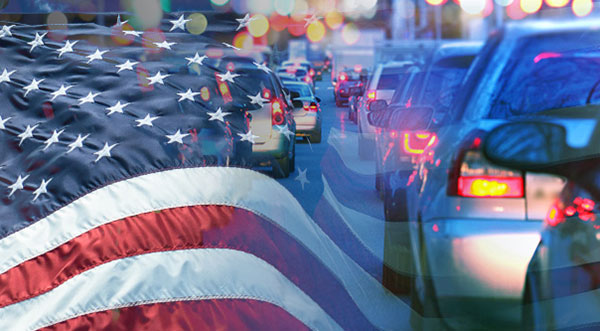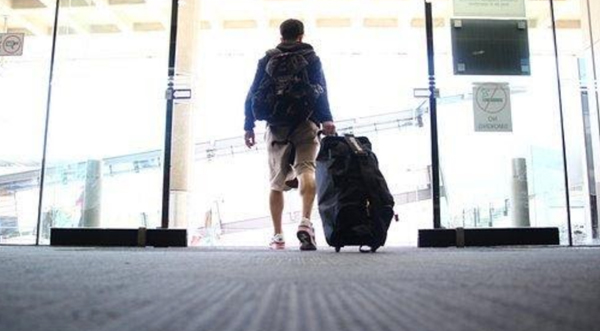AAA Examines Driving Habits During the COVID Pandemic Restrictions
By AAA // July 17, 2021
rideshare, transit, and taxi use plummeted

(AAA) – AAA is examining how the COVID-19 pandemic and associated restrictions, such as stay-at-home orders, led to a drastic drop in U.S. road travel and a sharp increase in the number of people who chose to stay home in 2020.
Research from the AAA Foundation for Traffic Safety’s New American Driving Survey (2020) shows:
■ The average number of trips for all modes of transportation dropped by 40% in April 2020.
■ Daily personal car trips plunged 45%.
■ The dip in travel moderated later in the year but remained below 2019 levels.
Click here to view the report
“This data demonstrates what a profound impact the COVID-19 pandemic had on our commute habits and patterns in the United States,” said Mark Jenkins, spokesman, AAA – The Auto Club Group.
Daily trips for all modes of transportation fell from an average of 3.7 trips per day in 2019 (dotted line below) to 2.2 trips in April 2020, before slightly recovering.
After abruptly decreasing in April 2020, daily trips by U.S. residents rebounded somewhat in May and June and then remained at approximately 20%–25% below their 2019 levels during the second half of 2020.
Other key findings:
Daily Car trips: (as a driver or passenger) declined from 3.2 pre-pandemic to 1.8 in April 2020, before rebounding to 2.6 trips for the rest of the time period.
All travel by any mode: Daily trips in April 2020 by people living in urban areas dropped 42%, versus 25% for their rural counterparts, before leveling off to a 20%-30% reduction in both groups for the rest of the survey period.
Travel by transit, taxi, or rideshare: The proportion of people who reported making any trips by transit, taxi, or rideshare plummeted from 5.5% pre-pandemic to 1.7% in April of 2020, before leveling off at approximately 2.4% for the remainder of the year.

Commuter Travel: Work-related travel by all transportation modes dropped by 40% in April 2020, likely reflecting a mix of layoffs, job losses, and telecommuting.
In the following months, commuting trips returned to approximately 26% below pre-pandemic levels among the population as a whole, likely due to increases in the proportion of Americans who were working.
Commuting remained approximately 25% below pre-pandemic levels among workers on days when they worked, indicative of continued widespread telecommuting.
Staying At Home: The percentage of the population who remained in the same place all day fluctuated between 9% and 14% before the pandemic but increased to 26% in April 2020, before stabilizing at levels slightly higher than those before the pandemic for the remainder of the year.
Crash Fatalities Increased Despite Less Traffic

Despite fewer cars on the road and more people staying home, the National Highway Traffic Safety Administration (NHTSA) recently estimated that 38,680 people died in motor vehicle traffic crashes in 2020 — the largest projected number of fatalities since 2007.
It is an increase of about 7.2 percent over 2019.
“It’s counterintuitive to see the rate of traffic deaths spike when so many of us were driving less often,” said Jake Nelson, AAA’s director of traffic safety advocacy.
“As the U.S. climbs out of the COVID-19 pandemic, highway safety officials will need to double down on curbing speeding, substance-impaired driving, and failure to buckle up.”
Traffic Trends Show Improvement
While the AAA Foundation for Traffic Safety’s annual American Driving Survey data covers the period ending December 2020, Energy Information Administration (EIA) data can help illustrate how driving has recovered recently.
According to implied gasoline demand data from the EIA, year-over-year driving figures dropped by as much as 45% in April 2020.
However, demand figures have rebounded this year. This week’s gasoline demand measurement is back in line with pre-pandemic levels. In fact, fuel demand for the week of Independence Day set a new all-time record high, coming in 3% stronger than the holiday period in 2019.
CLICK HERE FOR BREVARD COUNTY NEWS














